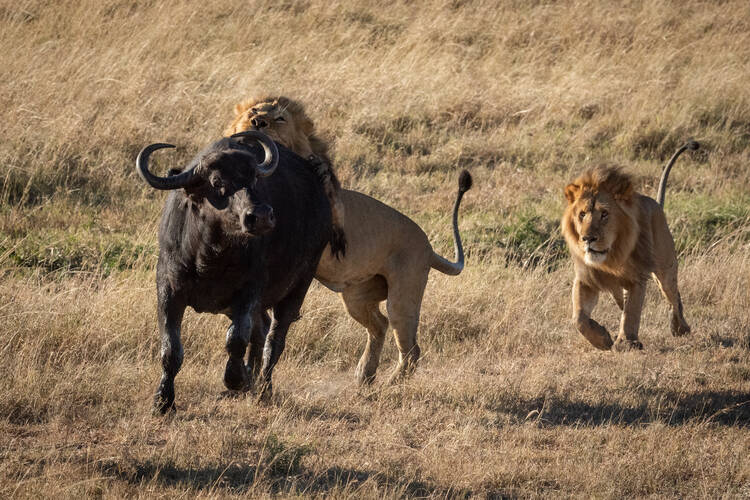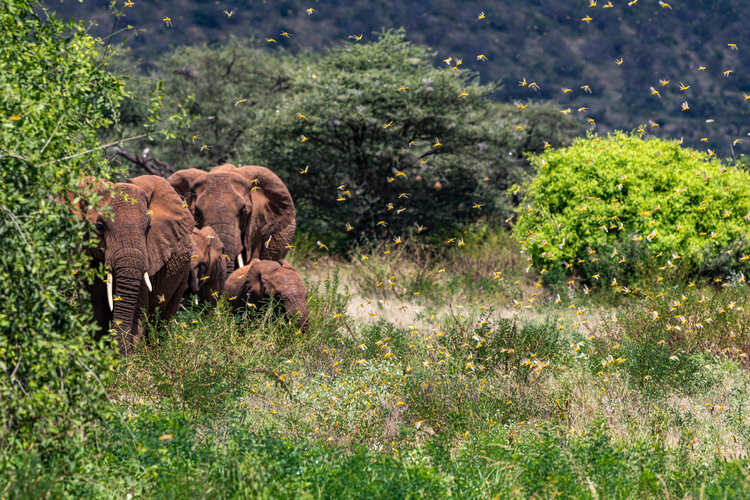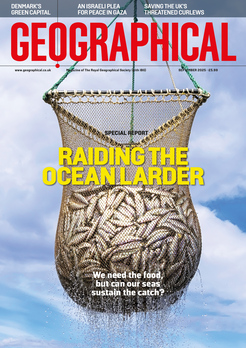
Narrated by David Attenborough, ‘Our Planet II’ captivates with poignant visuals, but could address environmental damage more forcefully
by Victoria Heath
The latest Our Planet II series offers a four-episode insight into the importance of animal migration for the planet, capturing spectacular scenes of mass migration and more intimate animal encounters with ease. Narrated by David Attenborough, the docuseries does address the environmental damage that humans have wreaked on the planet, but could have lingered on this stark reality for longer.
There are moments in the series which, inevitably, make you want to cry. Animals cleverly capitalise on the migration patterns of other creatures, and Attenborough narrates overtop these scenes, reminding us of the necessity of them doing so. An unassuming buffalo is chased by lions, eventually succumbing to a vicious attack as it shrieks. After approaching stealthily, an orca drags a still-alive sea lion out to the ocean to feed its family.

Scenes of mass migration are captured beautifully, so smoothly that it is easy to forget how difficult it must have been for videographers to be in the right place at the right time. Hundreds of cape buffalo march across the Kalahari desert to find water; 200 billion desert locusts swoop across the sky in a cacophony of buzzing in Ethiopia, set to a curated score of music that captures the scene at hand – a wild chase, a maternal moment, an awe-inspiring herd.

Smaller, more intimate moments are brilliantly depicted too. Tiny eggs released by Christmas Island red crabs are filmed in great detail. A golf-ball-sized murrelet chick travels across vast seas with its mother to collect krill, illuminated by the moonlight. The cameras truly seem to be everywhere all at once.
The illustrations in Our Planet II are brilliant too, depicting the Earth in aesthetically-pleasing detail, with terrain and labelled countries and oceans, as we follow the migratory paths of animals across thousands of kilometres.
Then there are the more hopeful parts, the near-misses of animals who evade the hungry mouths of their predators. While this upbeat, optimistic tone works in parts, it sometimes obfuscates the reality of our damaged planet.
On a seemingly desolate island, Our Planet II offers a sobering, poignant scene of a Laysan albatross surrounded by plastic. Another albatross carcass is spread open on the sand, bones strewn with colourful plastic debris. ‘There is now so much plastic in our oceans that it reaches even the most remote islands on Earth’, Attenborough tells us. This shocking scene is one of many which forces the viewer to confront the stark reality of the damage humans have caused, and arguably is the best scene at doing so, but it still pulls away to a comical musical interlude as the Laysan albatross clumsily walks to the shore. Lingering on the plastic-littered beach would have made for a more uncomfortable, but necessary, viewing, as the planet continues to face a plethora of issues from human-induced environmental damage.

A story of a 17-strong elephant family moving from their home in tropical rainforests in Yunann, China due to an intense drought — only to return after a year-long journey, unable to find a new home — is inflected with a reminder of people who raised money to help guide the elephants back to their original home, which had more favourable conditions upon the elephants’ return after the drought.
While the hard work of those who helped protect these animals should not go unnoticed, it is difficult to agree with Our Planet II’s optimistic summising of the elephants’ ‘happy ending’. Focusing more heavily, through words as well as visuals, on the environmental impact which forced these elephants out of their original home would have been a welcome addition to this story.

Our Planet II is a beautifully-filmed series, with captivating voiceover by David Attenborough, that highlights the importance of migration to animals across the world. It traverses across a range of landscapes, animals small to large, and does address human-induced environmental damage in parts. It may have benefitted from focusing more forcefully upon the facts of the urgent crisis of environmental damage, but it still made for a resounding and poignant docuseries that highlights that Earth is our planet as much as other animals’




